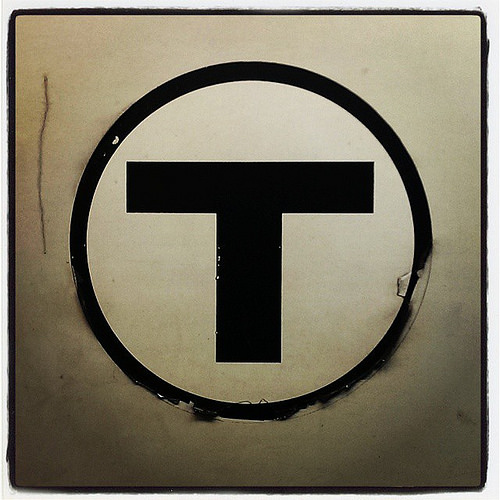I was reading an article called A Germaphobe’s Guide to Buying a MetroCard, which actually turned out to be a lot more about usability than germs, but it inspired me to think about how one might ride the MBTA with a minimum of infection opportunities. As the estimable Aaron Reiss wrote,
For a germaphobe of any standing, the world of public transportation is particularly wrought with anxiety. It is the apex of public: the welcome host to people and objects of every shape, size and degree of cleanliness. And it is a place that necessitates touch. Unlike the street, the park or the museum, our transit systems demand near-constant physical contact with their myriad surfaces. We sit. We hold on. We lean and we grab, palm after finger after sticky palm.
Indeed. As we exit (one hopes) the snowmaggedon season, it becomes a little less typical to ride public transit wearing gloves and with a scarf wrapped over your nose and mouth. Here are some suggestions for protecting yourself – and others – from germy contamination in the T.

Minimize Fare Machine Interactions. Monthly auto-renewing Charlie cards are the way to go. If you must use the touchscreen fare machines, try not to use your own fingers. Use touchscreen gloves or act confused enough that somebody comes and helps you. If you’re stuck all alone without gloves or helpers, try the knuckle of your least favorite finger and make a mental note to scour it when you get to your destination. I started counting how many times you had to touch the thing to do a simple transaction but I lost count.
Travel Off Peak. Surfaces in the T might be icky, but it’s really the people you have to watch out for, what with all the breathing, coughing, sweating, and other things I shan’t mention. So if you’re lucky enough to be able to choose your time of commute or travel, exercise that privilege to travel off-peak and away from the crowds, especially crowds of tourists and their grubby children. Whatever time you travel, look for the less-populated cars, usually a car or two away from the station entrances and ends of the trains.
Sit Down. This is somewhat dependent on the timing/crowding issue above, but if there’s room and there’s nobody more infirm than you nearby, sit down. As long as you’re wearing pants or a long enough dress or skirt, the ickiness you might get from the seat is nothing next to what you’d get on your hand from touching a pole or a strap. The farther from the doors you can sit, the less likely it is somebody will stand over you and cough on you.
Do Not Attempt to Surf. If you can’t sit down you might be tempted to lean against the doors (a no-no for oh so many reasons), grab a pole with your elbow or other covered body part (do not attempt unless you are a professional pole-dancer), or stand in the middle of the train and rely on your catlike sense of balance. Do not do this. The train is probably older than you, and the tracks could be twice that age. The things – and people – you might touch trying to break your fall are far more worrisome than what’s on the poles and straps.
Don’t be a Selfish Jerk. If you’re sick, wear a surgical mask, or better yet, just stay home. The train might be full of unvaccinated kids. But seriously, people in Japan and elsewhere have been doing this small, simple, considerate thing for a long time. Surgical masks are cheap at drugstores, and you can find a range of more fashionable ones if that’s how you roll. I admit there is some question about how much it really helps, but it certainly doesn’t hurt, and since the practice is still rare in the USA, you might even get a little extra personal space as people wonder what horrible plague you’re carrying and keep their distance. Probably foils those face-tracking surveillance systems, too. If you’re too fashionable for a paper mask, you can get a germ-filtering scarf called a scough, made in Brooklyn, of course. If you can’t handle any of these ideas, at least remember to cough into your own elbow.
TL;DR: wash your hands, people. Frequently. With soap.
